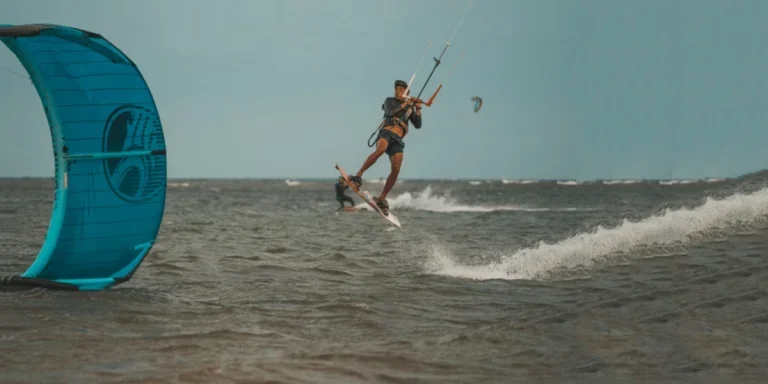Both kiteboarding and kitesurfing are adrenaline-filled watersports that combine the rush of flying with the thrill of surfing. They offer a unique blend of skill and adventure that isn’t found in other types of watersports, such as paddleboarding or kayaking. Although these two sports have many similarities, there are stark differences that cater to different conditions and preferences.
This guide will dive into the world of kiteboarding and kitesurfing, looking at what sets them apart as well as the important features that make them so popular among consumers. Keep reading to learn more about each sport and their equipment.
Table of Contents
How popular are kiteboarding and kitesurfing?
Global market value of watersports equipment
Key features of kiteboarding
Key features of kitesurfing
Conclusion
How popular are kiteboarding and kitesurfing?
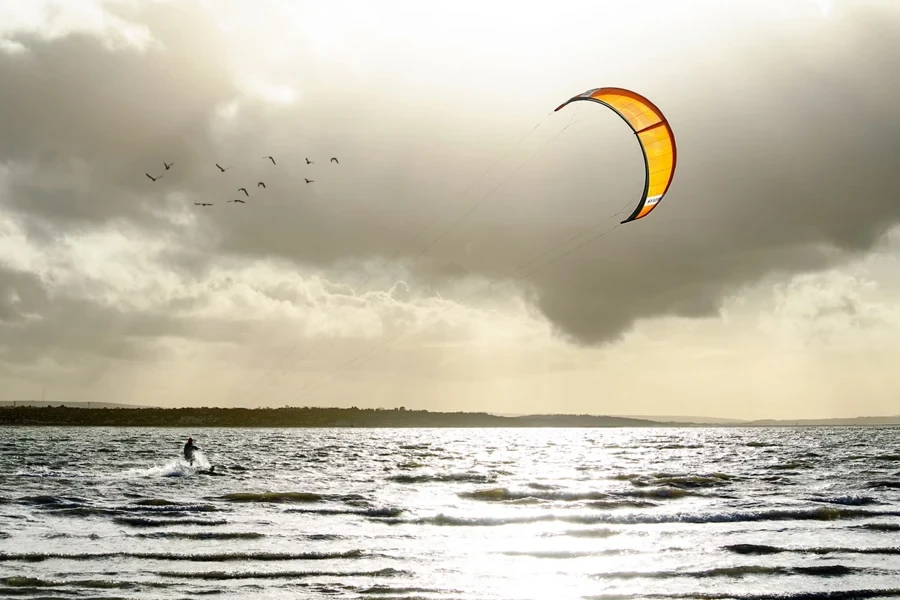
Kiteboarding and kitesurfing are both very popular water sports around the world, particularly where there’s favorable weather conditions. According to Google ads, “kitesurfing and kiteboarding” receives an average monthly search volume of approximately 40,500. The most searches appear in April, when searches reach 60,500. February, March, and May receive the second most searches, coming in at 49,500 per month.
These sports receive a lot of searches in the winter months as consumers are looking for equipment deals before heading into the summer. Many consumers also prefer to try their luck at kiteboarding and kitesurfing in the wintertime to avoid large crowds at the beaches.
Global market value of watersports equipment
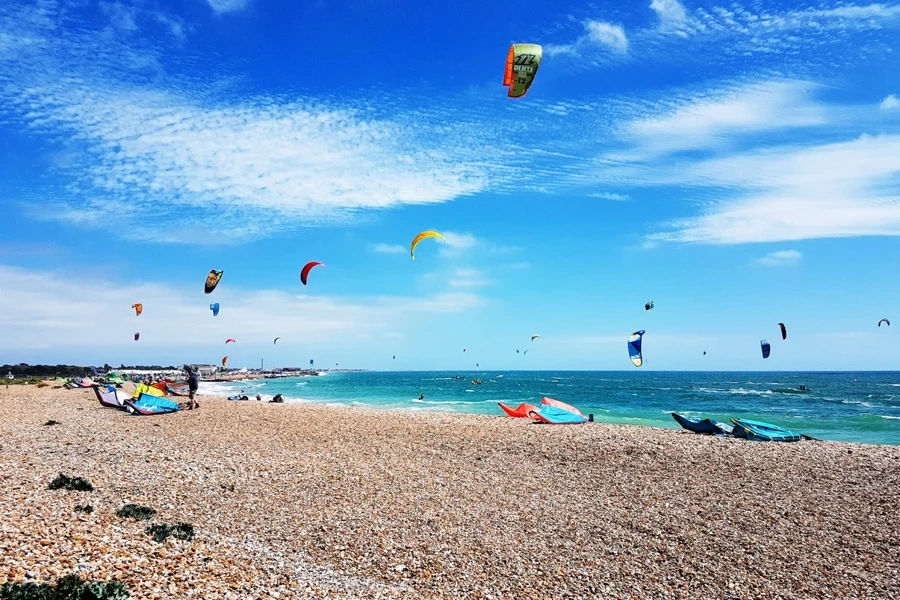
People who are engaging in watersports need appropriate equipment for performance purposes as well as overall safety. With a higher percentage of consumers taking an interest in living a healthy lifestyle and participating in sports, the demand for all types of watersports equipment has increased substantially in recent years. This includes equipment that’s needed for kiteboarding and kitesurfing, which is readily available through different distribution channels.
The global market value of watersports equipment reached above USD 45,500 million in 2023. Between 2024 and 2030, that number is projected to increase to at least USD 62,745 million, growing at a compound annual growth rate (CAGR) of 3.7% over the forecast period. This growth is mainly focused on developed regions of the world and places that have adopted water tourism and encourage participation in watersports.
Key features of kiteboarding
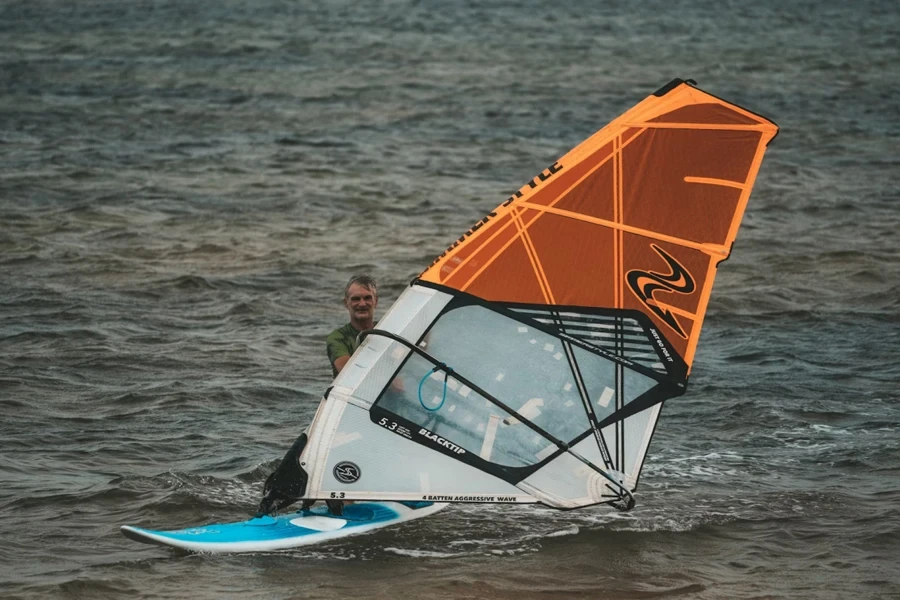
Many people refer to kiteboarding and kitesurfing simultaneously, but they have distinguishing features that set them apart. Kiteboarding is also known as kitesurfing’s cousin, so that might be where the confusion comes from. This dynamic watersport is also similar to wakeboarding, where the rider is pulled by a powerful kite while standing on a board. The board needs to have built-in footstraps to allow for control and stability.
The unique design of the board, which is twin-tip-shaped, allows the user to ride in both directions without the need to switch food positions. This is ideal for performing tricks as well as while riding in windy conditions. Kiteboarding is a sport that focuses on big air maneuvers and freestyle moves. Riders will use the power of the kite to launch themselves into the air to execute all types of flips and tricks. It’s a versatile sport that can be enjoyed on a variety of surfaces too, not just water.
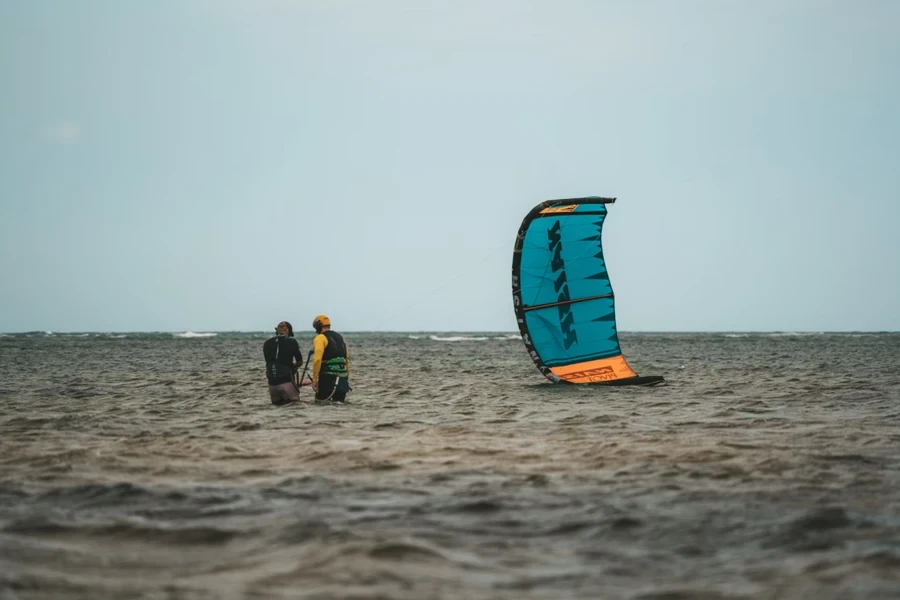
All of the kiteboarding materials need to be lightweight and durable in order to maximize performance. The kite is generally made of polyester or ripstop nylon that can resist tearing and withstand UV rays. The board is constructed using a mixture of composite materials such as fiberglass, wood, and, in some cases, Kevlar. These materials add both flexibility and durability in different areas of the board. And finally, the lines and bars are made of thin yet strong materials such as Spectra or Dyneema, and the control bar is made of carbon fiber or aluminum.
Overall, kiteboarding is more versatile than kitesurfing and can be done in various conditions, unlike kitesurfing, which is wave-oriented. What sets them apart is the type of board used, which involves riding on a directional board, and the riding style. Kiteboarding is also more suitable for beginners in terms of difficulty level.
Key features of kitesurfing
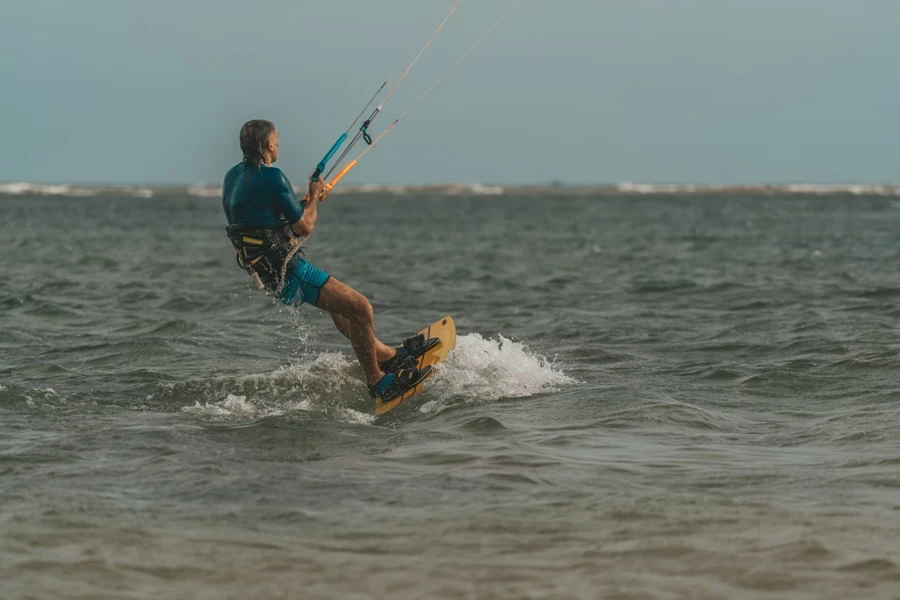
Kitesurfing is another exhilarating water sport that harnesses the power of the wind. Whereas kiteboarding often takes place on flat water, kitesurfing is designed for riding ocean waves. It combines the elements of kiteboarding and surfing into one sport by using a directional board that allows riders to carve and ride the face of waves. The rider is attached to the board with foot straps and is able to guide the steerable kite by pulling on durable ropes to help change direction and stay on track.
The equipment for kitesurfing needs to be made from lightweight and durable materials for optimized performance while surfing the waves. The materials used are very similar to those used in kiteboarding equipment. The kite for kitesurfing is generally made from polyester or ripstop nylon, with the addition of Dacron for added durability. The directional board is constructed using a combination of foam, fiberglass, and wood, and it’s not uncommon for carbon fiber to be used either to help with buoyancy and flexibility.
Since kitesurfing requires a certain style and set of skills compared to kiteboarding, the board also features fins for better control and to help carve through the waves. This also helps the rider to generate more speed and be able to transition into using the energy of the waves, which allows for more fluid and smoother turns. The techniques needed are very similar to those found in traditional surfing.
Conclusion
Both kiteboarding and kitesurfing require a specific set of skills in order to control the speed and direction of the board. Whereas kiteboarding can be done on calmer waters, kitesurfing requires interaction with waves, much the same as surfing does. Both watersports are very popular among consumers who enjoy adrenaline sports and being out on the water. In the coming years, as water tourism continues to grow, the watersports equipment market is projecting that watersports such as kiteboarding and kitesurfing will be in even more demand than they are now, especially within the tourism sector.
